Volume 10, Issue 1
Displaying 1-11 of 11 articles from this issue
- |<
- <
- 1
- >
- >|
-
1996Volume 10Issue 1 Pages 1-7
Published: February 29, 1996
Released on J-STAGE: March 09, 2011
Download PDF (974K) -
1996Volume 10Issue 1 Pages 8-17
Published: February 29, 1996
Released on J-STAGE: March 09, 2011
Download PDF (1484K) -
1996Volume 10Issue 1 Pages 18-21
Published: February 29, 1996
Released on J-STAGE: March 09, 2011
Download PDF (572K) -
1996Volume 10Issue 1 Pages 22-28
Published: February 29, 1996
Released on J-STAGE: March 09, 2011
Download PDF (840K) -
1996Volume 10Issue 1 Pages 29-41
Published: February 29, 1996
Released on J-STAGE: March 09, 2011
Download PDF (1296K) -
1996Volume 10Issue 1 Pages 42-45
Published: February 29, 1996
Released on J-STAGE: March 09, 2011
Download PDF (838K) -
1996Volume 10Issue 1 Pages 46-50
Published: February 29, 1996
Released on J-STAGE: March 09, 2011
Download PDF (1210K) -
1996Volume 10Issue 1 Pages 51-55
Published: February 29, 1996
Released on J-STAGE: March 09, 2011
Download PDF (877K) -
1996Volume 10Issue 1 Pages 56-60
Published: February 29, 1996
Released on J-STAGE: March 09, 2011
Download PDF (1624K) -
1996Volume 10Issue 1 Pages 61-64
Published: February 29, 1996
Released on J-STAGE: March 09, 2011
Download PDF (738K) -
1996Volume 10Issue 1 Pages 65-69
Published: February 29, 1996
Released on J-STAGE: March 09, 2011
Download PDF (593K)
- |<
- <
- 1
- >
- >|
